Kangaroo Camera Security Kit, Privacy Camera review: A budget system that’s not too ‘cheap’
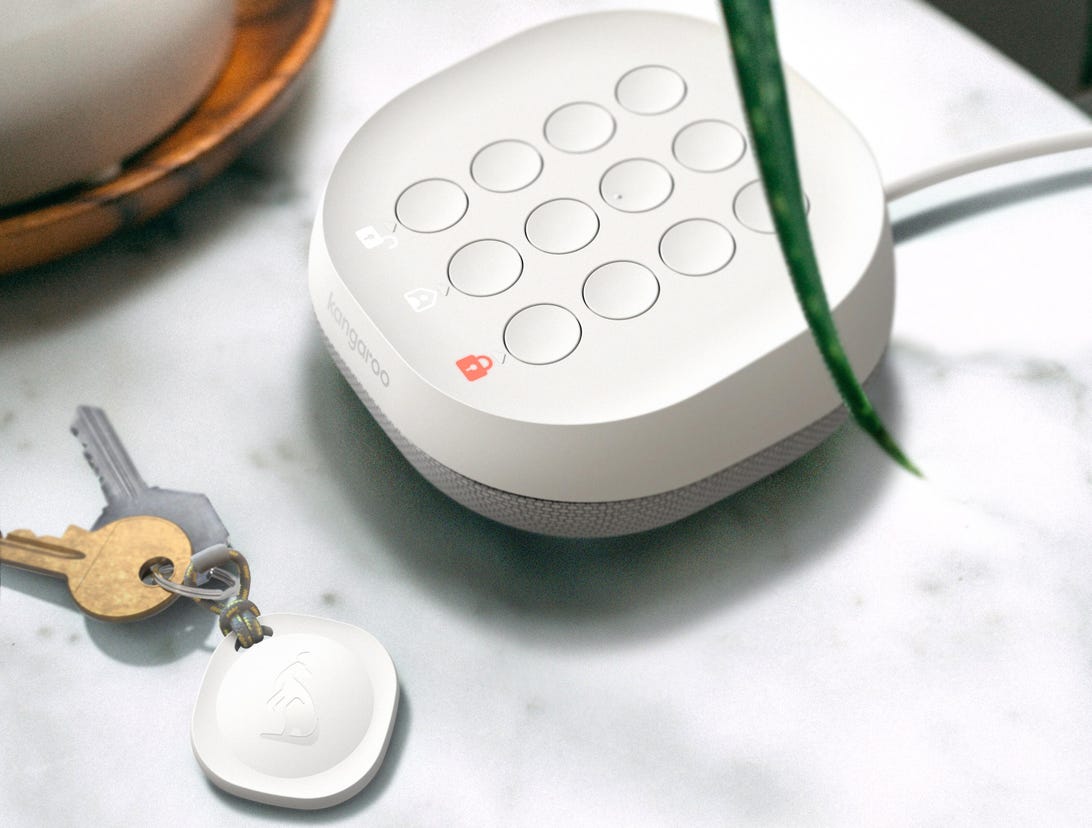
Kangaroo includes key fobs called Roos that you can tap on the company’s keypad to arm and disarm your security system.
Kangaroo
I’ll admit my bias in favor of Kangaroo up front — I love cheap prices. I’ve spent hours combing through Amazon listings looking for a motion sensor that costs less than $20 (Guess who makes one?). Especially when it comes to tech that’s going to get plugged in or otherwise affixed to a spot and forgotten about, I don’t care what it looks like or who makes it. I just want it to do its job and not cost an arm and a leg.
And that’s where Kangaroo mostly shines. The core components of Kangaroo’s home monitoring kit just work. Their build quality is on the level, and the gear does what it’s intended to do, as advertised, with as few frills as possible (except for one perplexingly geeky frill in the security camera, which I’ll get to). Unfortunately, I also discovered the outer limits of Kangaroo’s minimalist (aka “cheapskate“) approach with its low-res, still-shot-capturing doorbell cam.
Like
- Priced to sell
- Basic kit works great
- Superb build quality
Don’t Like
- Doorbell camera lacks features
- Privacy Camera exclusive to Walmart
Can you trust Kangaroo’s security system and the various products it comprises? I think so. In my testing, Kangaroo’s gear all proved perfectly reliable. More fundamentally, should you buy any of this stuff? My answer is, I would buy… some of it.
Let’s hop right in.
From joey to Roo: Kangaroo comes of age
Kangaroo says the company chose its name because the animal is friendly and approachable but also known for fiercely defending its own. Also, “kangaroo” translates roughly the same across multiple languages. Despite planning ahead for eventual global dominance, however, Kangaroo has taken the slow and steady approach to expanding its catalog.
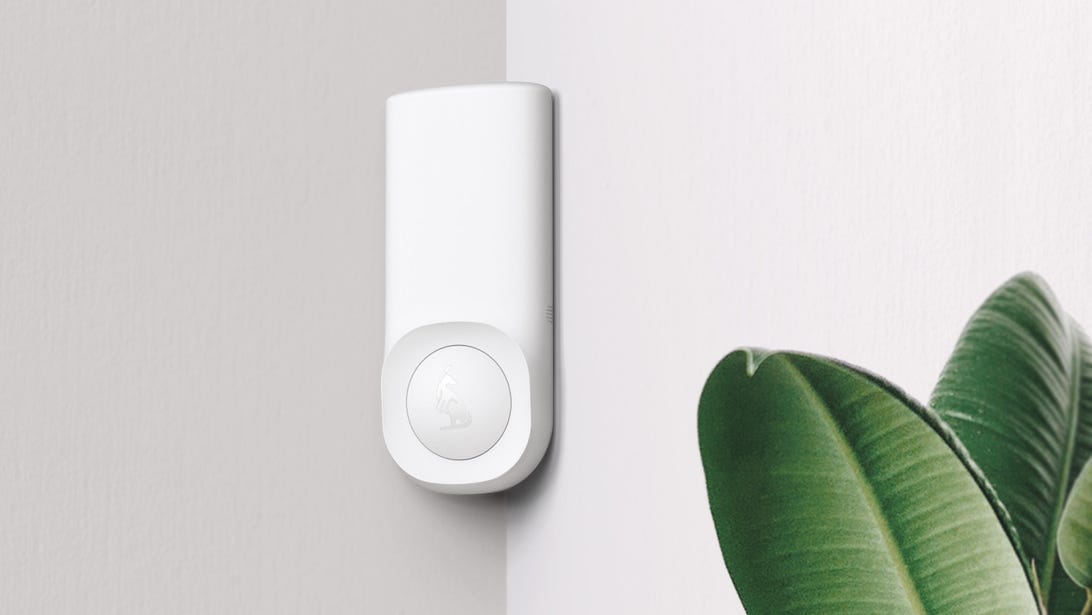
At first, the only product Kangaroo sold was this wall-mounted motion sensor.
Kangaroo
When Kangaroo launched almost three years ago, the company brought one and only one type of product to market: motion detectors. About a year later, the fledgling DIY security company put together its first bona fide starter kit, which you can still get today. It’s made up of those motion detectors but with added entryway detection, a keypad with alarm and some other gear.
In my testing, I found these components to be the best and most reliable of everything Kangaroo sent me (and Kangaroo sent me everything). The home monitoring kit gear is well-built and solid in the hand and looks as clean and minimalist as any other company’s similar gear. This is the spot where the budget-minded company’s value proposition really stands out.
Here’s everything the 8-Piece Security Kit with Professional Monitoring for $119 comes with:
- Electronic keypad with alarm.
- 3 motion/entryway sensors.
- 1 climate sensor (aka leak detector).
- 2 RFID tags (called Roos) for arming/disarming.
- 1 year of professional monitoring.
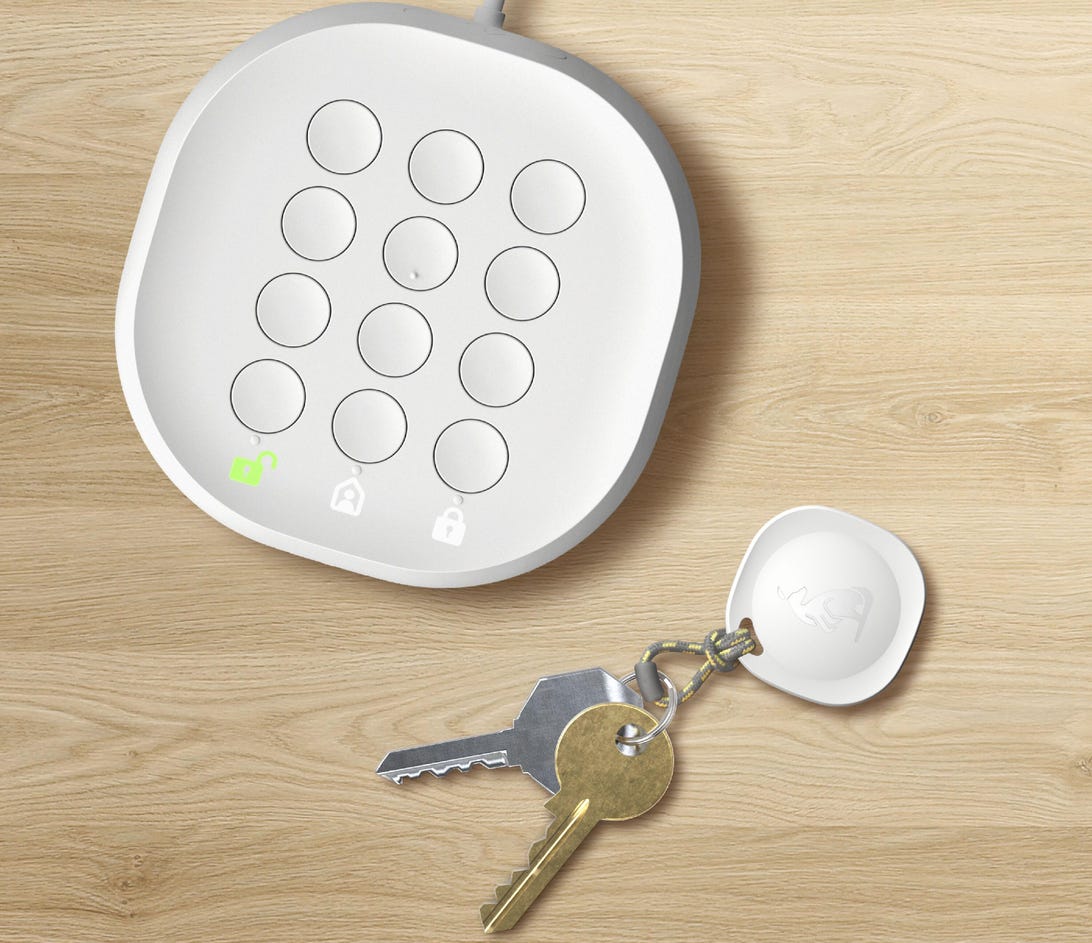
The keypad alarm is at the center of the Kangaroo security kit and can be armed or disarmed with a Roo key fob.
Kangaroo
The keypad alarm also listens for third-party smoke and carbon monoxide alarms (a detector of detectors, if you will). And the motion detectors pull double duty, attaching to doors and windows, notifying you when they open and reporting any unexpected movement in the house while you’re away. (You can turn off motion detection if you’ve already got, say, a camera watching over the room.) And finally, the cute little Roo key tags add an adorable touch — just tap one on the keypad to arm or disarm the system.
Kangaroo also offers a 5-Piece Security Kit with Professional Monitoring for $99, which includes only two of the motion and entry sensors and no leak detector. Unless you have only two doors or windows and excellent insurance, I’d spring for the bigger kit.
After several weeks of testing, including a trip out of town that left the system armed for a whole 10 days, I can say with confidence that I trust the Kangaroo home monitoring kit to protect my home. It all worked exactly as expected — including the many times when, returning from a walk with my brindle boxer, I intentionally left the system armed — to my little buddy’s chagrin.
The alarm is definitely loud. Not quite cover-your-ears loud, but for sure make-your-dog-howl loud.
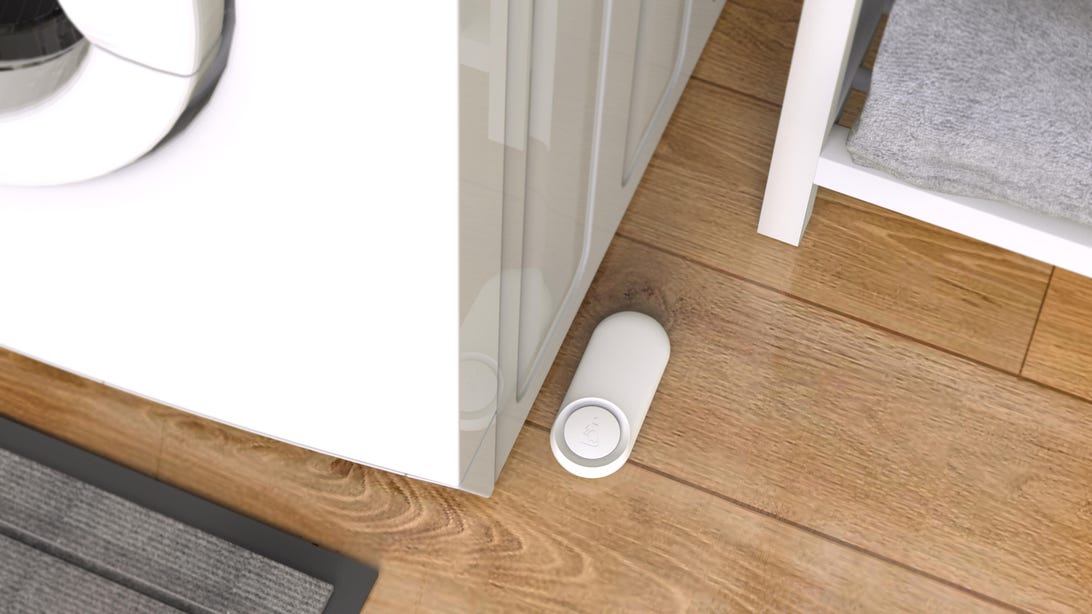
Kangaroo includes a climate sensor, aka leak detector, in its expanded eight-piece home monitoring kit.
Kangaroo
As with any system of this sort, if your alarm is tripped and not soon thereafter disarmed, a professional monitoring service will pick it up and, if need be, contact first responders. After the initial free period, professional monitoring runs $8 per month or $99 per year when billed annually, which is on the low end of average for such a service.
This basic kit is priced competitively with a comparable Wyze security kit ($100), which CNET’s David Priest was quite impressed with, and well below starter kits from Ring ($250) or SimpliSafe ($299), both of which are great, just much more expensive. One important difference to note, however, is that neither Kangaroo nor Wyze offers any kind of cellular backup if your Wi-Fi network goes down, whereas the kits from Ring and SimpliSafe and most other security kits do.
If all you need is a simple home monitoring system that watches doors and windows and looks for motion inside, any of those kits, including Kangaroo’s, would do just fine. But any such system needs at least a few security cameras, too, right?
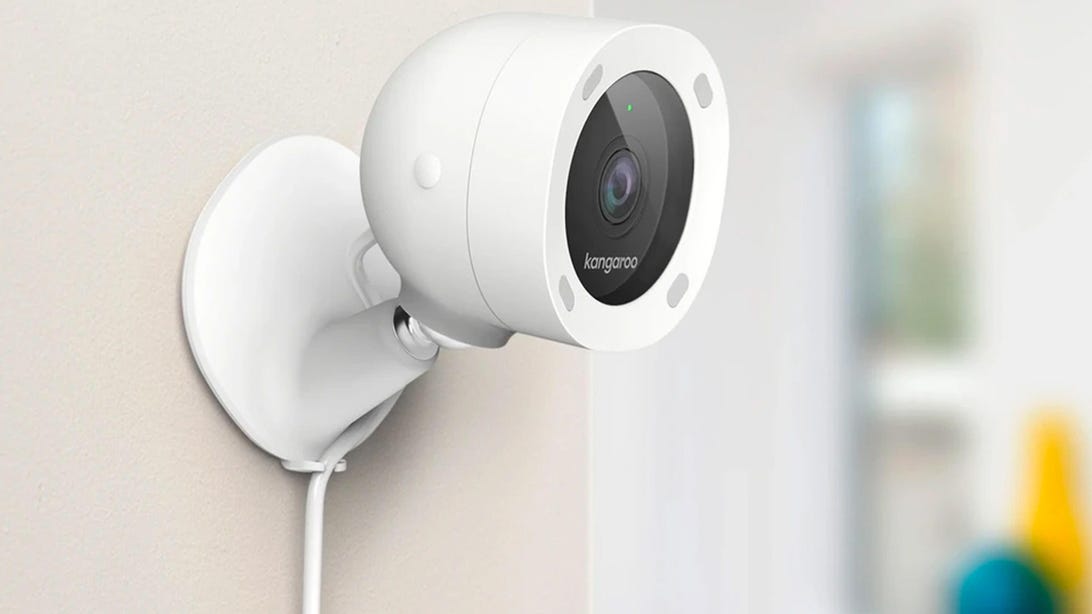
Kangaroo’s premium home monitoring service, $99 per year or free for one year with some purchases, stores video clips from the Kangaroo Privacy Camera for 30 days.
Kangaroo
The saga of the Kangaroo Privacy Camera
First of all, nice touch on the name. What other companies call a security camera, Kangaroo dubs a Privacy Camera — and for good reason. For a company built on the concept of low-cost, no-frills security gear, the Kangaroo Privacy Camera has one useful, albeit geeky, frill: It uses what’s called polymer dispersed liquid crystal or PDLC glass to create a physical barrier in front of the camera, so when you turn it off you know it’s off.
Basically, PDLC glass has an array of polymer particles (plastic pieces) that line up when an electrical current is passed through so you can see through the glass. Cut the electricity, and those particles fall into disarray, creating a frosted, opaque screen that lets you know the camera can’t see anything, since you can’t see it.
One other quirk of the Kangaroo Privacy Camera — it’s available exclusively at Walmart for $69.
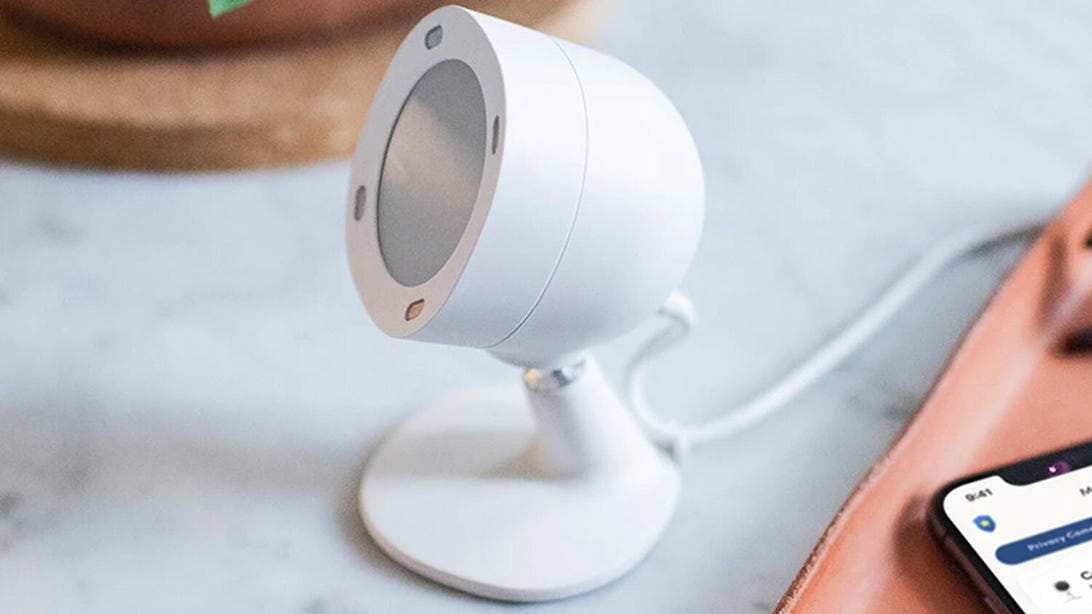
When the Kangaroo Privacy Camera is unplugged or the camera is turned off, the glass turns opaque so you know you’re not being recorded.
Kangaroo
The Kangaroo Privacy Camera is a perfectly serviceable device. Like the gear included with the monitoring kit, the camera’s build quality is on par with the best of the competition. Both the live video feed and recorded clips default to an industry-standard 1080p, which can be reduced to save on bandwidth. Videos both live and recorded are about as clear and detailed as you’d expect from a budget camera, and motion events trigger a recording that’s saved for 24 hours on the free plan and 30 days with Kangaroo Complete ($99 per year, with free offers galore).
However, I almost couldn’t test any of this out. No matter what I did or tried, I could not for the life of me get the Kangaroo Privacy Camera connected to my home Wi-Fi network. Assuming I’d been sent a dud camera, I asked Kangaroo to send another, which the company quickly did. Same issue, so Kangaroo sent another. And it happened again, a third time.
I was about to give up when Kangaroo co-founder and CTO James Xu let me know they’d figured out the problem and a patch was imminent. Mine was, as they say, an “edge case” — meaning my issue wouldn’t affect the vast majority of users. Regardless, Kangaroo had identified the problem, and a solution was forthcoming. But still, I had to know what was causing the problem.
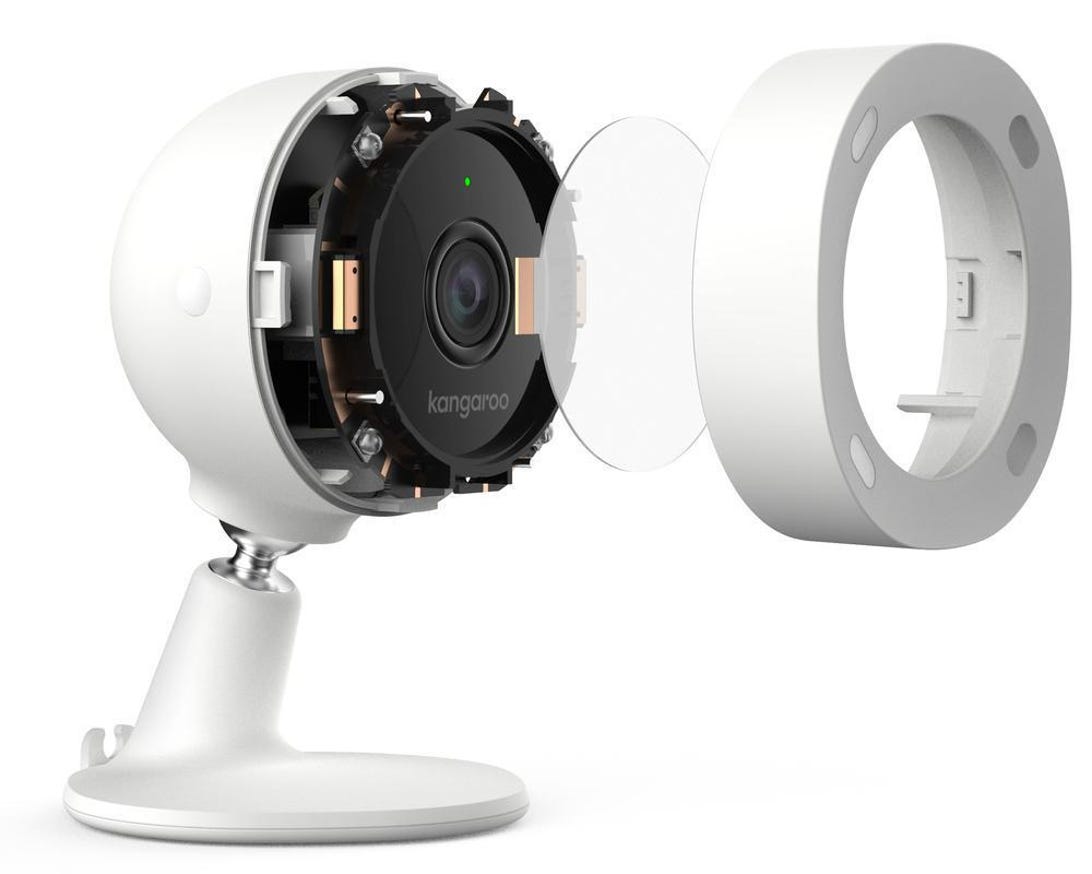
I took apart my tester camera to try and solve a Wi-Fi problem that turned out to be the result of a bug.
Kangaroo
Xu is the best kind of nerd. He warned me ahead of time that the answer would likely go over my head. It did, but I caught just enough to learn that the problem had to do with the Wi-Fi radio in the Privacy Camera. Basically, on account of the recent global chip shortage, Kangaroo had to source the radio from an alternative vendor, and that radio had a chip, and that chip had a bug.
After some troubleshooting, I discovered that the name I’d given my Wi-Fi network — which included the word “Wi-Fi” with the hyphen — was tripping up the chip on the camera’s Wi-Fi radio and prompting the app to report that it couldn’t find any networks. All I had to do was rename my Wi-Fi network something without a hyphen and — voila — it worked.
What impressed me most about this fiasco was that the crew at Kangaroo didn’t just leave me hanging; they actually dove in and solved what was obviously a totally random and highly unusual bug, then implemented a fix for all their customers.
If only, then, they could fix the most problematic of Kangaroo’s products…
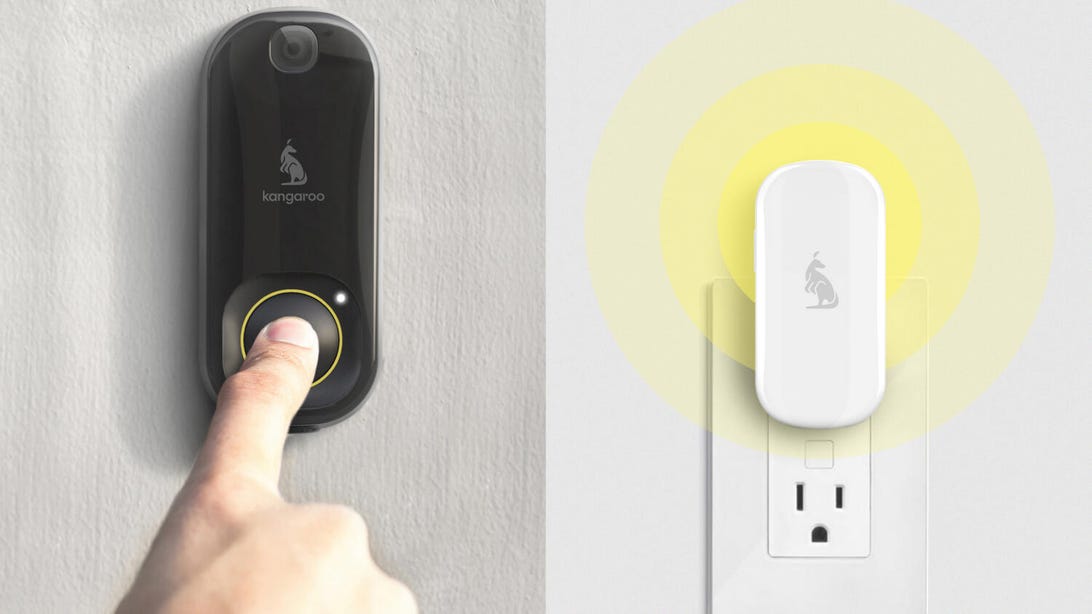
For $25 you get the Kangaroo Doobell Camera and wireless plug-in Chime and, well, you get what you pay for.
Kangaroo
Kangaroo’s, er, vegemite-and-toast: The Doorbell Camera
Kangaroo might be best known for its “As Seen On TV” deal, which gets you a wireless doorbell camera and a plug-in chime for about the same cost as a pizza delivery. It’s marketed specifically to ward off porch pirates, aka, package thieves — but that might be the only thing it’s good for, honestly.
The camera doesn’t take video. Rather, it captures a series of grainy 480×640 still shots whenever motion is detected. Sure, you might capture a porch pirate’s face, but getting an ID on the perp is another story. Especially since it’s nearly impossible to adjust the exposure settings to get images that aren’t either washed out or too dark.
At first, when setting up my test system, I dismounted my Ring 4 Doorbell Camera and brought it inside, figuring I didn’t want to confuse DoorDash drivers or package deliverers by having two smart doorbells to choose from. The Ring 4 soon went back up when I realized, without a live view option or intercom function on the Kangaroo Doorbell Camera, I couldn’t watch in real time for no-contact deliveries or thank drivers personally from the comfort of my home office.
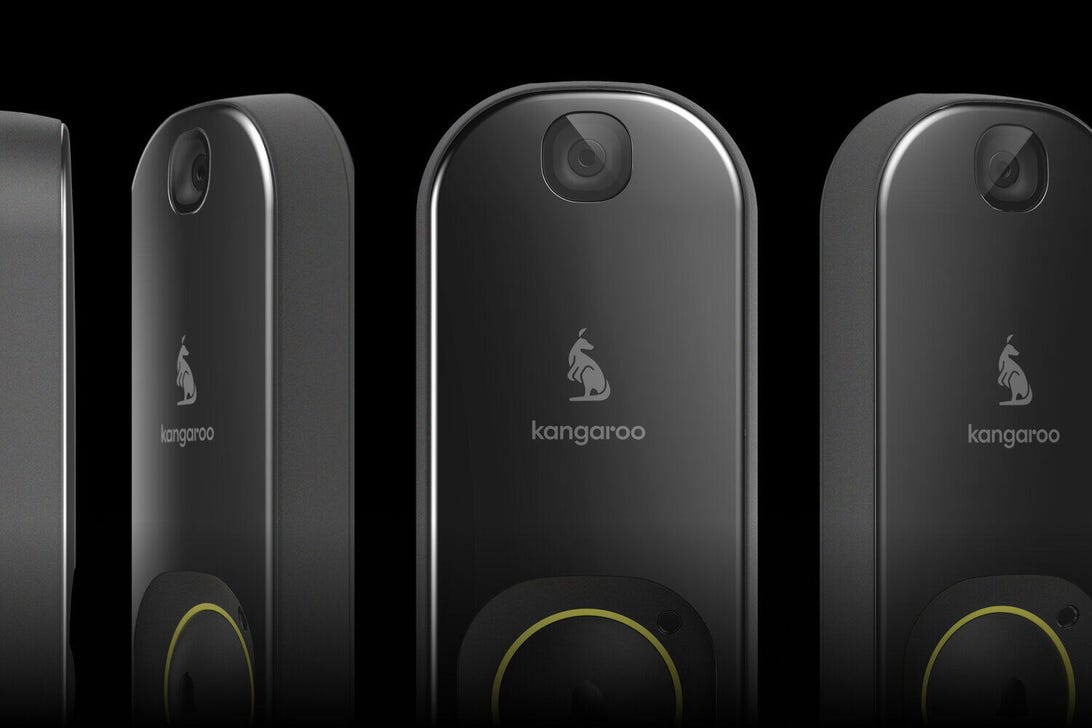
For a flagship product, the Kangaroo Doorbell Camera lacks most features you’d expect from a doorbell camera.
Kangaroo

Our sentiments exactly, confused kangaroo. Why couldn’t the doorbell camera be just a little better?
Screenshot by Dale Smith/CNET
My conclusion is this: The Kangaroo Doorbell Camera would work just as well as a deterrent if you just stuck it on your door and did nothing else. No app, no image capture, just a blinking light and a camera eye pointed at your deliveries. Is that worth $25? Maybe to someone.
But the Kangaroo Doorbell Camera isn’t for people like me, who obsess over deliveries and like to talk to strangers through their doorbell. I guess it’s for people who’ll never check their camera unless there’s a problem, and who know they’re less likely to have problems if there’s a camera watching.
Xu acknowledges the shortcomings of the doorbell cam: “I think there are definitely some areas [we] can improve on that product, one of which is the picture quality. We’re launching a new product very soon, toward the end of this year, that further improves on today’s photo capture quality.”
For now, I think most people would be better off spending a bit more for a significantly more capable device. Ring has a $60 option that can provide all the things you’d expect, like live view and intercom — plus it records real videos. Wyze has a similar product for $55. At press time, you could even get a refurbished Ring 2 video doorbell for $80 — I have a Ring 2 near my garage around back and it’s still a solid performer.
Kangaroo says a new and improved doorbell camera is in the pipeline for sometime later this year. I’m hoping eventually it’ll hit that sweet spot, with a doorbell camera that can do just a little bit more than ward off thieves, at a price commensurate with a food delivery order.
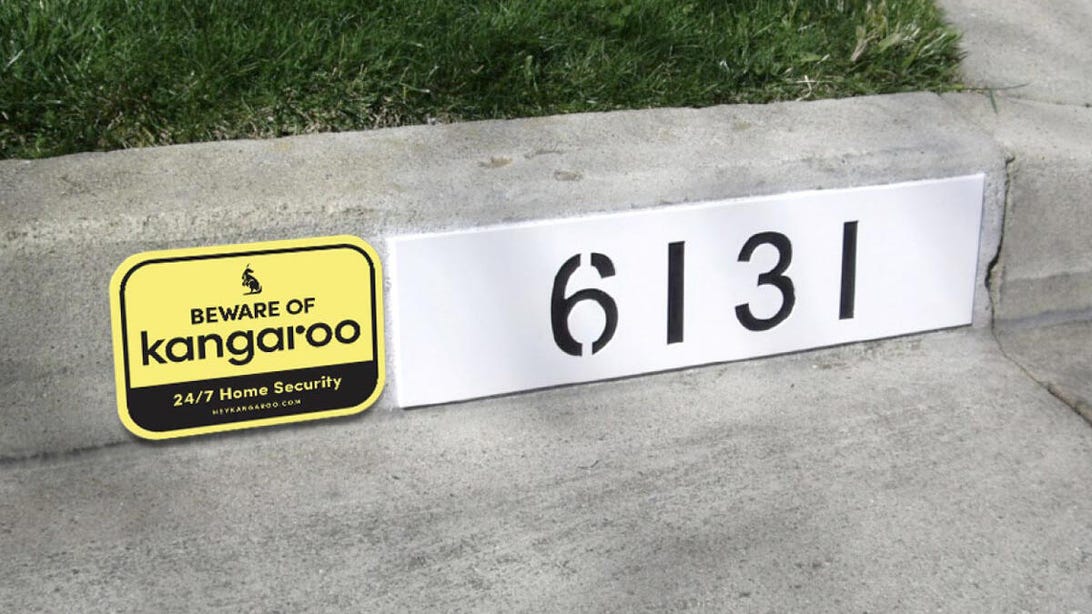
A yard or curb sign might be just as effective at warding off porch pirates as the Kangaroo Doorbell Camera.
Kangaroo
Should you buy Kangaroo? Yeah and nah
Kangaroo is on the right track, even if it’s fumbled a few times along the way. The company has mapped out a trajectory that one day might place it alongside some other big names in the industry, but it’s not trying to get there in a single straight shot. Rather, the company is taking an iterative approach — cutting into the market where it sees a gap (with a sub-$30 doorbell camera, for example), then improving from there.
I’d definitely consider buying Kangaroo’s home monitoring kit, just because of its price. And I’d snatch up a few of the Privacy Cameras if the price ever dropped closer to that of the $33 Wyze v3 camera, which can also be used outdoors (Kangaroo’s can’t). The doorbell camera is a hard pass, though, for me or for anyone.
